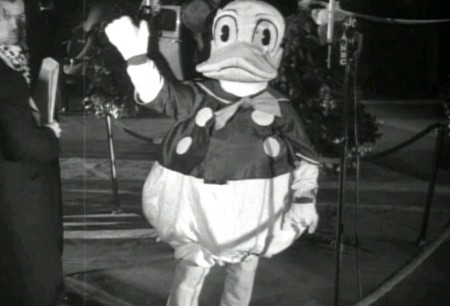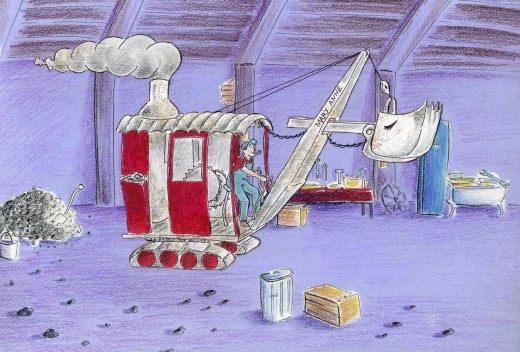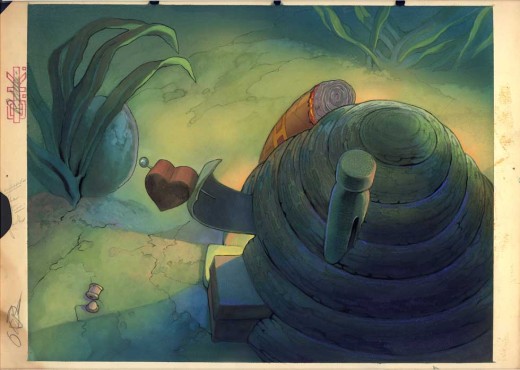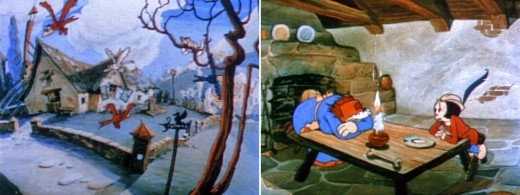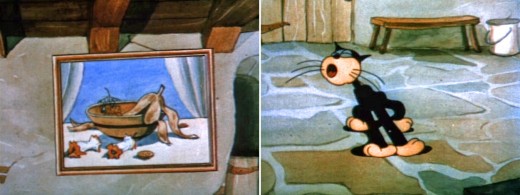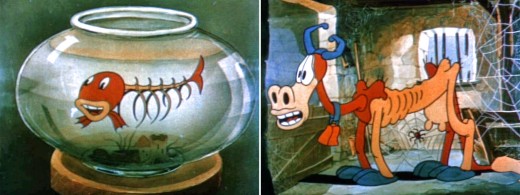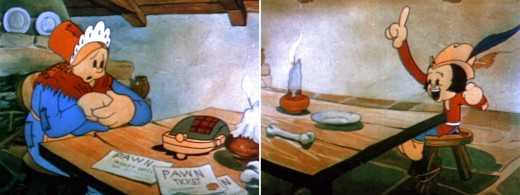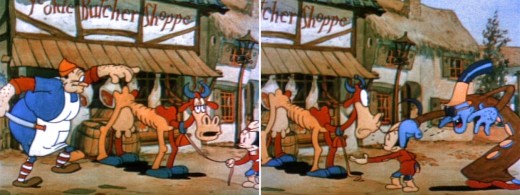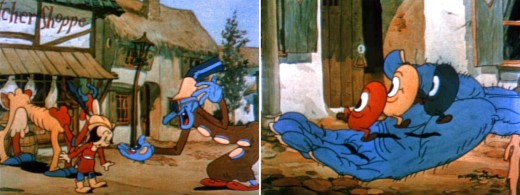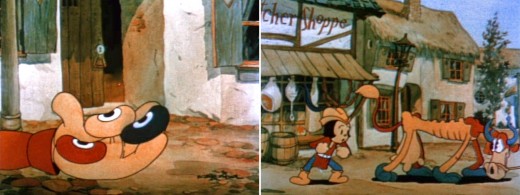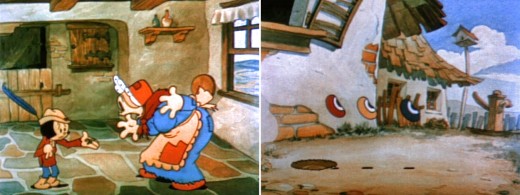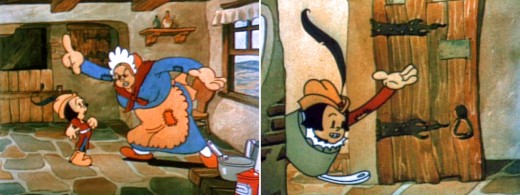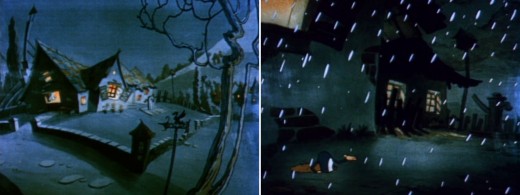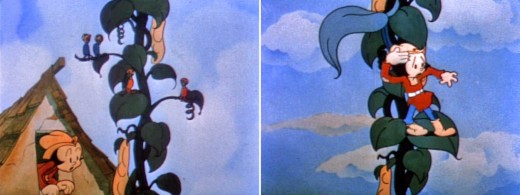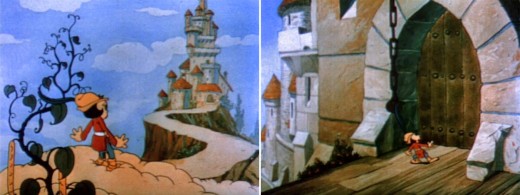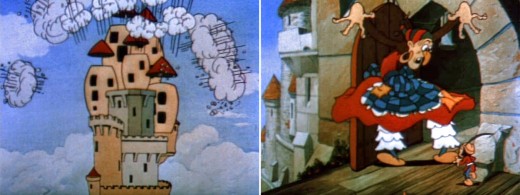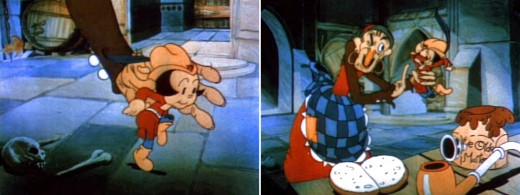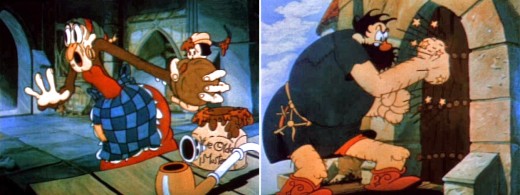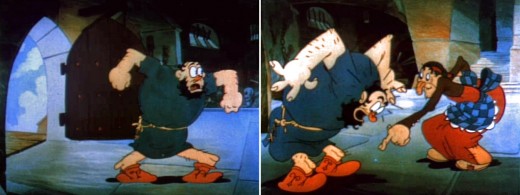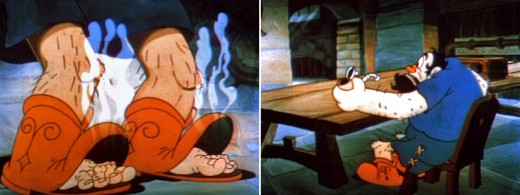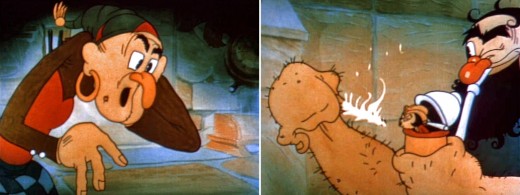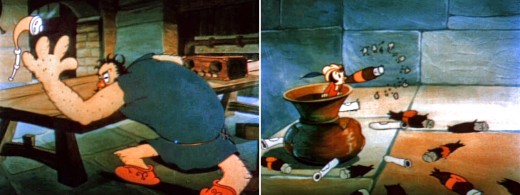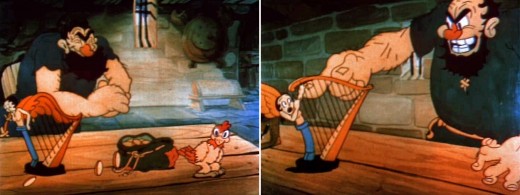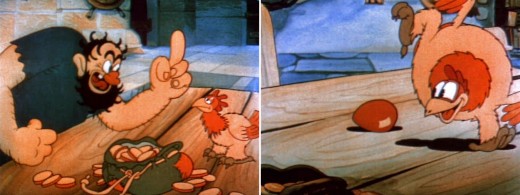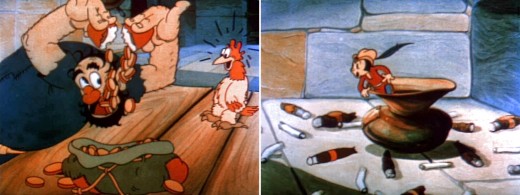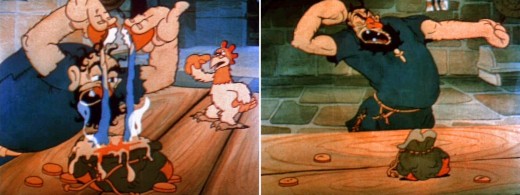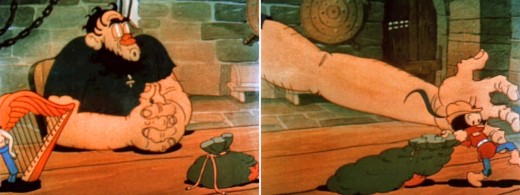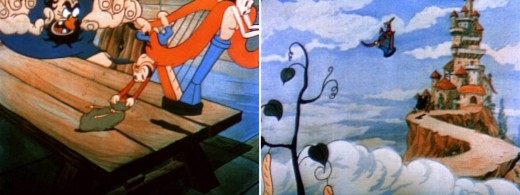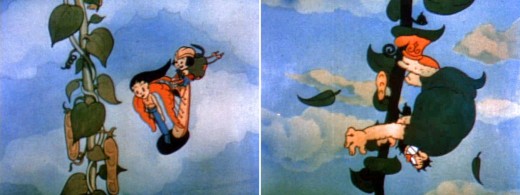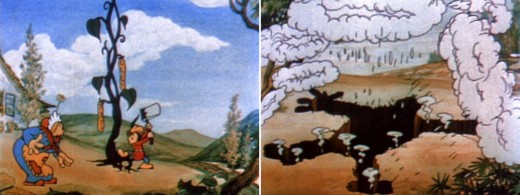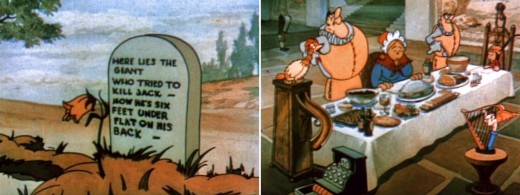Yearly Archive2009
Commentary &Disney &Frame Grabs 05 Jan 2009 09:02 am
Snow White amusements
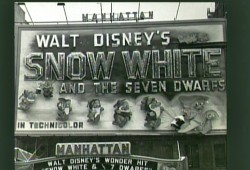 - There’s a lot of material, much of it very amusing, on the Snow White dvd. On disc 1 of the two disc set, there’s a documentary about the hostory and making of the film. In it the images make a lot of sense as they detail the history of the first Hollywood feature-length cartoon, but some of those images are just too precious for me to allow them to slip by without my singling them out and giving my two cents.
- There’s a lot of material, much of it very amusing, on the Snow White dvd. On disc 1 of the two disc set, there’s a documentary about the hostory and making of the film. In it the images make a lot of sense as they detail the history of the first Hollywood feature-length cartoon, but some of those images are just too precious for me to allow them to slip by without my singling them out and giving my two cents.
_____(Click any image to enlarge.) ________Here are frame grabs from this documentary.
.
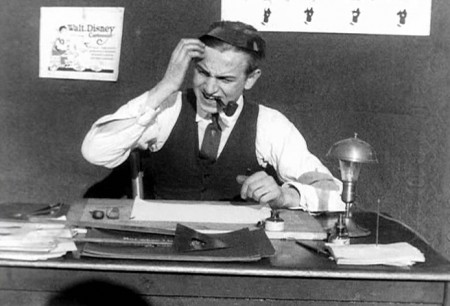
Walt is presented as a bumpkin in the early days.
I suppose he was directing if not filming this material,
so that’s the image he sought to create as well.
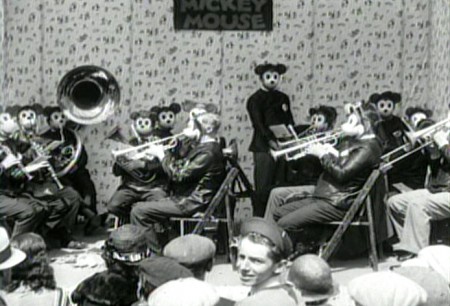
This has got to be one of the wackiest pictures in their archives.
The popularity of Mickey Mouse in the early 30′s.
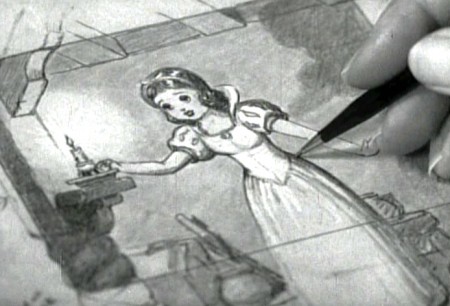
Snow White brings a change to the studio,
which you can well understand.
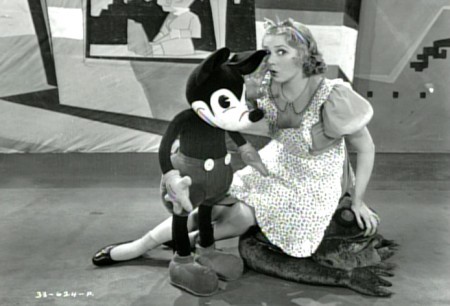
Though there’s still the problem about what to do with Mickey.
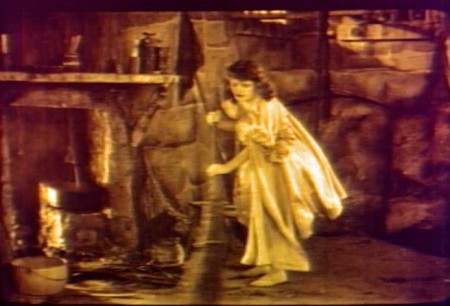
Disney was supposedly inspired by a silent filmed version
of Snow White he saw in his younger days.
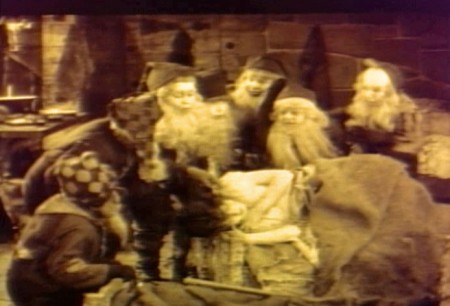
One wonders if there was also an eerie creepiness to the performance
that Walt gave to all of his animators one night as he acted out the film.
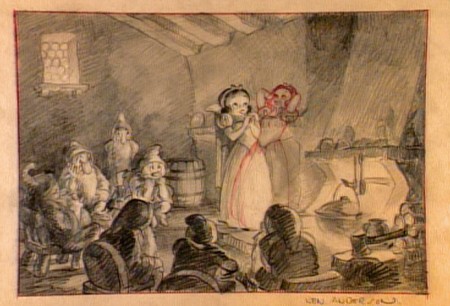
I’m curious about the pose of Snow White with her head back
and her hands behind the head.
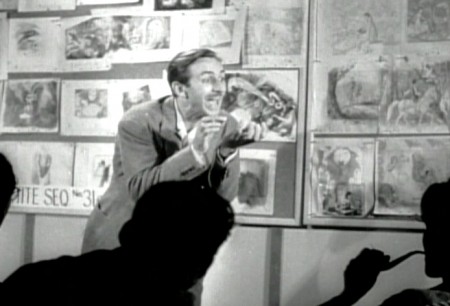
Here, Walt tries to get his animators to bite into an invisible apple -
the future of animation – as they thoughtfully smoke their pipes.
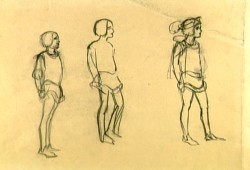
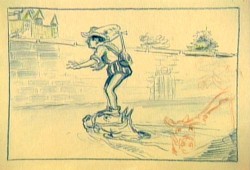
The bed building and the soup eating scenes weren’t the only ones that were
excised from the finished film. It seems the prince, initially had a larger role.
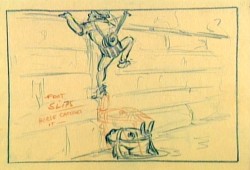
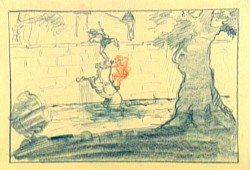
The path into the castle was a bit more difficult. First you had to
get past the moat with the help of your horse. Here the prince looks
a bit like Robert Benchley.
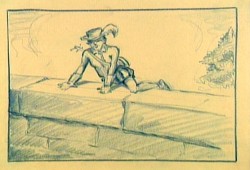
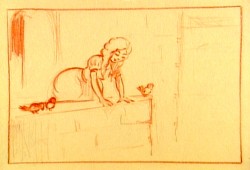
“Romeo, Romeo, Wherefore art thou, Romeo?”
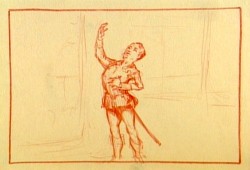
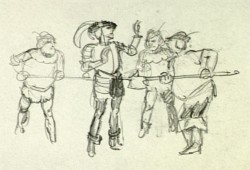
Getting caught. Obviously, the Queen and Snow White didn’t live in that
castle by themselves. There were henchmen we didn’t know about.
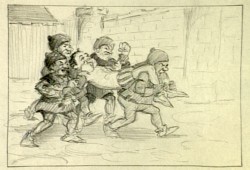
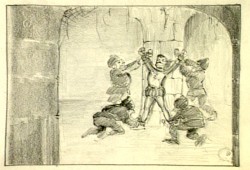
This almost looks like an early version of the seven dwarfs
carried the prince to prison.
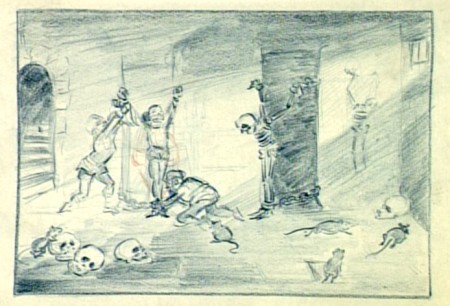
They had big rats in that prison. Scary.
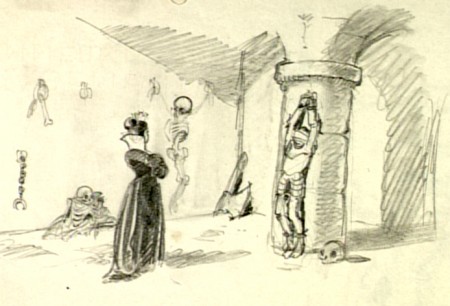
This is an obvious precursor of Malificent going to visit Prince Phillip some
20 years later in Sleeping Beauty. Both wicked Queens got more attractive.
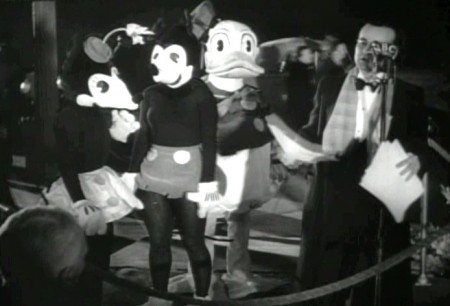
Lots of stars showed up to the grand premiere.
These actors in costume were there, too.
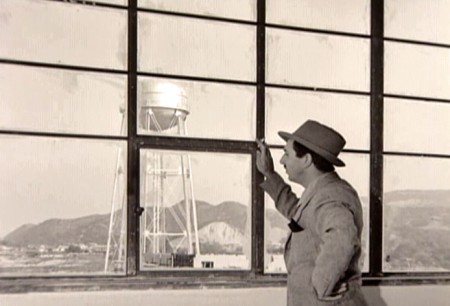
In all seriousness, the film was a masterpiece. I’m still studying it some
70 years later. Walt had reason to be proud and happy. He also had enough
money to move onto other challenging films, and he took the challenge as
opposed to making Snow White 2 or 3 (as they probably would do today.)
Photos 04 Jan 2009 09:51 am
SundayPhoto – Shake Shack Xmas
 - Christmas isn’t officially over; I think that occurs on Jan 6th, Tuesday. But for all intent and purposes, it’s over. We’re into the New Year, and it’s back to work and school.
- Christmas isn’t officially over; I think that occurs on Jan 6th, Tuesday. But for all intent and purposes, it’s over. We’re into the New Year, and it’s back to work and school.
I was amused a bit to have seen this sign signifying the decorative Christmas festivities happening in Madison Square Park, as I entered yesterday at the rear of the park. (I walk uptown to downtown, entering at the rear, exiting at the entrance.)
I guess I read it a bit fast (it was cold out and I was moving quickly), and I misunderstood somewhat. I went to the Shake Shack expecting to see an elaborate display. This is a small eatery in the South-western side of the park. There’s always an extended line here for the hot dogs, hamburgers and other foods they serve. There was a display, but it hadn’t changed in the past weeks.

The Shake Shack is actually recognized – I think by New York Magazine -
to have some of the best snacks in New York.
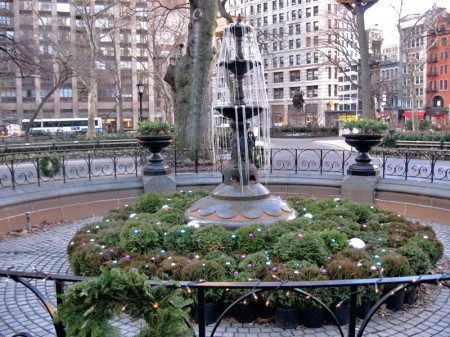
However, the nearby fountain did catch my eye.
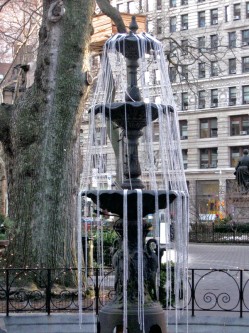
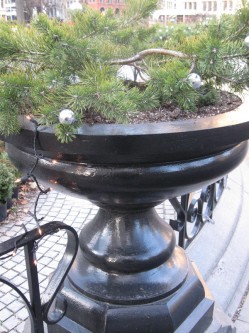
The water was artificially created with some clear plastic strips.
The encircling fountains were dressed with shiny, colorful egg-like balls.
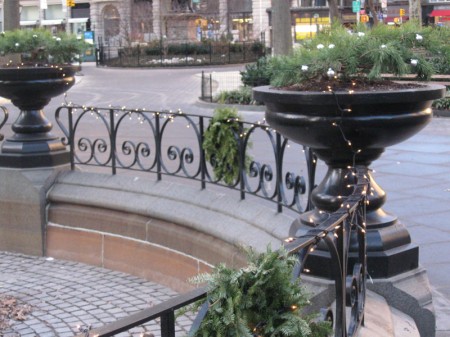
There were about six of these around the centered fountain.
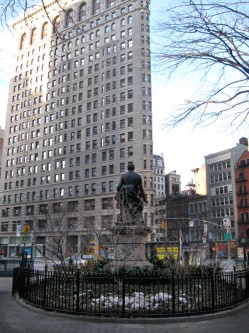
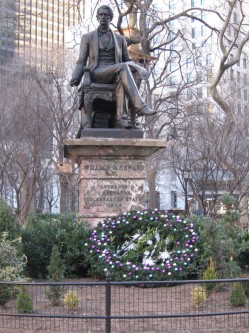
Leaving the park through the main exit at 23rd Street and Fifth Ave. is always
impressive. That Flatiron Building dominates the statue of William H. Seward.
From outside the park, there doesn’t seem to be a lot of decorative display within.
Only a Christmas wreath and a couple of colored eggs rest beneath Seward’s feet.
I’m curious to see how long before these are down and gone.
I guess that’ll be the end of Christmas.
SpornFilms 03 Jan 2009 10:49 am
HBO Storybook
- For years, I did a number of half-hour shows for HBO which often were musicals. I was able to hire some of Broadway’s best composers and talent and work with a great staff of artists to turn out a number of these films. They’ve become perennials on HBO Family and have cycled there for some time now.
For those with HBO, let me point out that a number of these films will be shown tomorrow, Sunday January 4th, as sort of a Michael Sporn Block. Two of them, The Red Shoes and The Dancing Frog, are included in the 6 disc dvd set that just came out, but some are still owned by HBO and haven’t been released. (I’ve linked all of the titles to a credit list for each film.) Here’s the schedule:
- LYLE LYLE CROCODILE
2:00 PM HBO Family – EAST
5:00 PM HBO Family – WEST
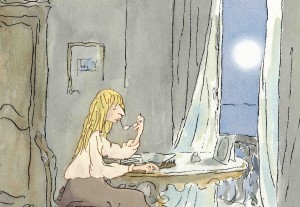
THE STORY OF THE DANCING FROG
2:30 PM HBO Family – EAST
5:30 PM HBO Family – WEST
THE RED SHOES
3:00 PM HBO Family – EAST
6:00 PM HBO Family – WEST
EARTHDAY BIRTHDAY
3:30 PM HBO Family – EAST
6:30 PM HBO Family – WEST
MIKE MULLIGAN & HIS STEAMSHOVEL
4:00 PM HBO Family – EAST
7:00 PM HBO Family – WEST
Here are a couple of stills from some of these films:
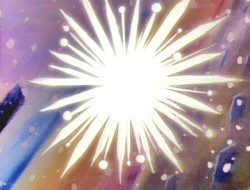
“There were evergreens shining like jewels high on a tower rooftop; dazzling window displays;
Central Park, looking magical and majestic.”
These are the lines of narration that greeted me when I initially read the “Narration Script” Maxine Fisher had written for The Red Shoes.
Ossie Davis did a wonderful reading for us.
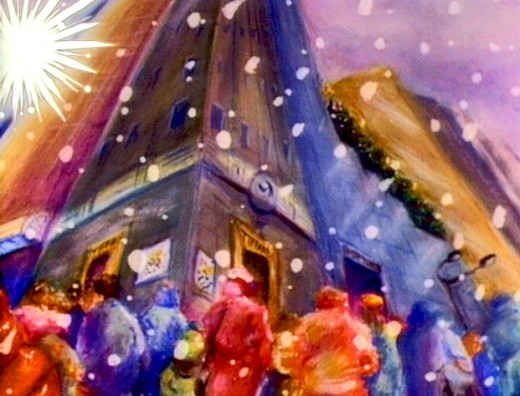
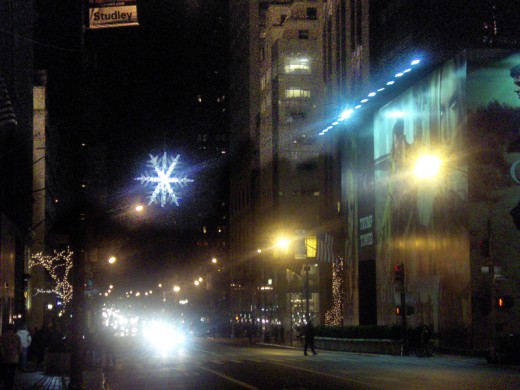
This is a picture of the real star in front of Trump Tower on 57th St.
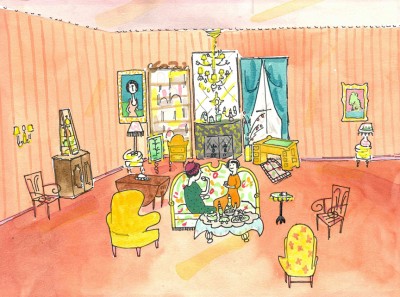 This is a strong transitional moment in Lyle Lyle Crocodile. They’ve just discovered a crocodile living in their house, and Mrs. Primm sings a narrative song telling all that’s happened since they’ve moved in to share the house with Lyle.
This is a strong transitional moment in Lyle Lyle Crocodile. They’ve just discovered a crocodile living in their house, and Mrs. Primm sings a narrative song telling all that’s happened since they’ve moved in to share the house with Lyle.
I’ve loved this set up by Bridget Thorne since first seeing it.
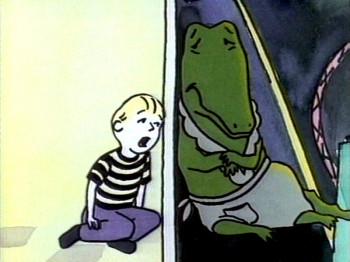 John Dilworth animated a very strong scene exactly right.
John Dilworth animated a very strong scene exactly right.
It grew out of a conversation with Bridget talking about something her son did. It was so right to place the two characters, about to be separated, on opposite sides of a door, while the boy sang about separation.
It also gave me the opportunity for split screens – for some reason this is a cinematic device I just love.
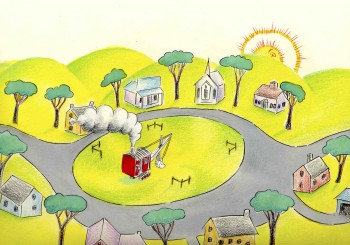
The illustrations in the book of Mike Mulligan and His Steamshovel include a lot of white and odd framing. It also had very tiny people throughout. There was never a close up of Mike Mulligan or any of the humans in the story. Even MaryAnn, the steamshovel, was often small in her surroundings.
This meant devising the entire film around some odd framing. It also meant a complicated design of the characters so that they would look as though they’d popped from the book, but, in reality, were wholly new designs.
Liz Seidman did a superb job of accomplishing both of these problems even as she supervised the entire production for me.
Daily post 02 Jan 2009 09:20 am
The Future is in the Past
- After posting my copy of the book, Mr. Bug Goes To Town, Robert Cowan sent me another gem from his unbelievable collection of animation art. This is a background from the film’s start. Hoppity’s just arrived and is trying to separate the cigar from the Honeyhouse.
Do they make them more beautiful than this? You can scrape through many of the current features and come up empty handed in comparison. Of course one expects the wonderfully imagined things about the Fleischer backgrounds – the heart shaped sign stuck with a hat pin, the clothespin reaching from the honeycomb – but the densities in that watercolor. There’s something vulnerable and glorious about good watercolors.
Bob Little OK’d the background. I wonder how much he, personally, contributed to it. I met him briefly at Grim Natwick’s 100th birthday party August, 1990.
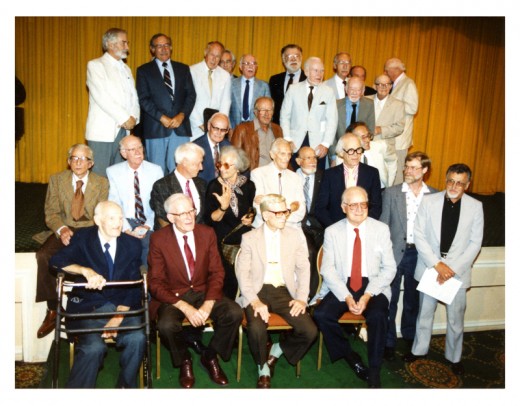 (Click on either image to enlarge.)
(Click on either image to enlarge.)Robert Little is in the upper right just in front of Bill Littlejohn.
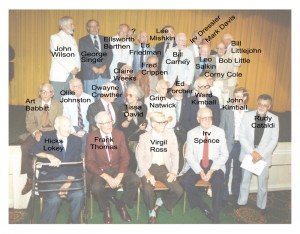 In situations like this party, I tend to become a bit shy and anchor myself in a comfortable place. This, as it turns out, was near Bob Little who I met for the first time. The entire evening was a jaw dropper for animation fans, but meeting Mr. Little was certainly a highlight for me. We talked for at least a good half hour, and I was in animation heaven.
In situations like this party, I tend to become a bit shy and anchor myself in a comfortable place. This, as it turns out, was near Bob Little who I met for the first time. The entire evening was a jaw dropper for animation fans, but meeting Mr. Little was certainly a highlight for me. We talked for at least a good half hour, and I was in animation heaven.
It was also a pleasure to see Tissa in the same room with Grim. She’d assisted him for a couple dozen years, and they were quite close with each other in all the years since they stopped working together. I’ve always felt an odd connection to Grim. He passed everything on to Tissa who took it and ran with it. She passed some of what she knows on to me.
Animation &Frame Grabs 01 Jan 2009 09:09 am
Beanstalks
- For New Year’s Day, I’m going to go back to the beginning. My beginning – or at least the day I think I truly came to understand what animation involved and how much I really loved it.
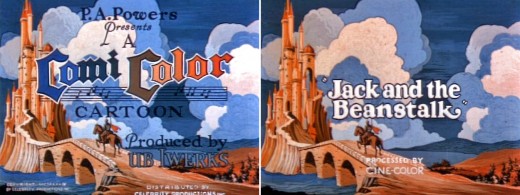
(Click on any image to enlarge.)
I was 12 and had saved my entire summer savings working as a delivery boy for a pharmacist not far from my home. All I made was tips, and the summer had brought me a full $30.
I wanted a projector to watch films. If I was going to make cartoons, I had to have a projector. (Who thought about having a camera to watch them!)
My mother sat down with me – we lived in the Inwood section of far upper Manhattan. She gave me a home-drawn map of the city and told me how I could get there by train. On my own, I took a subway trip to 42nd Street and headed for Peerless Cameras. This was a camera store near Grand Central which would later merge with Willoughby to become Peerless-Willoughby.
They had used 8mm projectors (before the invention of super 8 ), and I intended to go home with one. I did – $25.
Of course, I needed something to project, and Peerless had a VERY LARGE section of entertainment films – 8mm & 16mm. Castle Films distributed many of the Ub Iwerks shorts (most were B&W prints.) They were cut down a bit from the full film, and title cards were edited into them. Obviously, the 8mm projectors and films were silent back then (we’re talking about 1959.)
I’d known the name of Ub Iwerks since I was 8. He was as close to an animation hero as I could muster at that young age. I’d read all about him and knew of the period when he’d had his own studio. There, in Peerless, was Jack and the Beanstalk, and this was the first film I bought.
I felt absolute delight watching that film an endless number of times. The film was, as I said, in B&W, but this actually enhanced some problems old Ub had faced when he started out.
The color paints, for example, weren’t so smooth to lay down. The hand of the bean-seller streaked like crazy and was more obvious in the B&W version. The same was true of the giant’s hand later in the film. Obviously, any time they mixed white into their colors, they couldn’t get it consistent. Terrytoons had this problem well into the 40′s.
It was fun noticing the many elements that made up the film. There were special effects in the film. I’d known that Iwerks was involved in “Special Processes” at the studio (whatever that was – it had to be effects), so you could look at what he did in his own studio. The dark house in the rain storm, illuminated by the lightning was impressive.
Also, the characters were so wacky, you couldn’t help but be entertained by them. The drawing shifted all over the place, but despite the fact that I noticed this – at the age of 12 – I also knew I didn’t mind. You always knew who the characters were even if they went wildly off model.
Every once in a while, there was a hint of a “multiplane-like” effect. When Jack stepped off the beanstalk and onto the clouds, the cel levels move into a position so that the illusion of depth is attempted. It’s handled nicely, I have to say.
Of course, it was a bit of a surprise to find that I couldn’t stop the projector one frame at a time. I wanted to do more than watch the film over and over and over and over and over (which I did.) Eventually, I got tired of this and started tinkering with the machine. I had to be cautious so as not to jar the bulb which could easily burn out and cost me another five bucks.
There was a framing device on the projector. Sometimes the frame line was in the picture and you had to turn this knob to properly frame the picture. By turning this an ungodly number of times, you could actually advance the frames, but you couldn’t see more than about four frames at a time.
That wasn’t quite good enough, so I ultimately started taking the projector apart. I was able to rework the framing mechanism so it could keep going. I was able to watch the film one frame at a time and truly study the animation.
I can’t tell you how many hours I pored over this film.
There was a scene where the giant watches money falling out of the hen’s golden eggs. His one eye follows the coins down (and later follows the rotten egg leaking into the money bag.)
I remembered this scene well when studying some drawings Tytla had done of Stromboli counting his coins. His eyes are similarly loose as they follow the coins to the table, and I wondered if he had known about this giant animation.
Back then, I wasn’t aware that Iwerks hadn’t drawn the entire film by himself. I eventually came to learn that Grim Natwick pretty much ran the studio for quite some time and was replaced, after he’d left for Disney, by Shamus Culhane.
Years later, when I first met up with Grim Natwick, I told him that this film was the very first animated film I’d studied and studied in my goal of becoming an animator. He didn’t offer much of a reaction.
It was a real treat taking this film apart. I started out knowing nothing and soon learned that animation had many decisions and choices behind it. Even today I get a twinge of excitement when I first look at this short – I’m sure it’s as much nostalgia as anything.
In short, it’s all so much easier today. Get a dvd through the mail, look at it on YouTube. Get an animation program like Flash and wallah you’re an animator. There’s no effort. Maybe there was an advantage to having to make an effort.
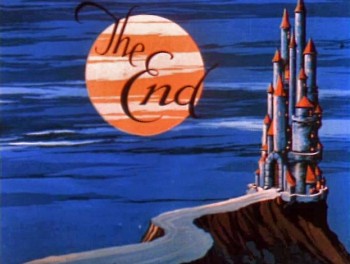
Here’s the link to the YouTube version of the Jack & the Beanstalk.
And here’s the link to vol 1 of The Cartoons That Time Forgot.
Happy New Year
